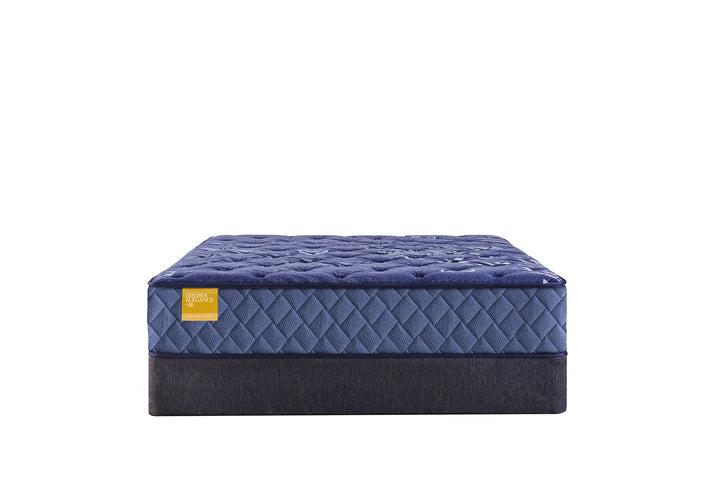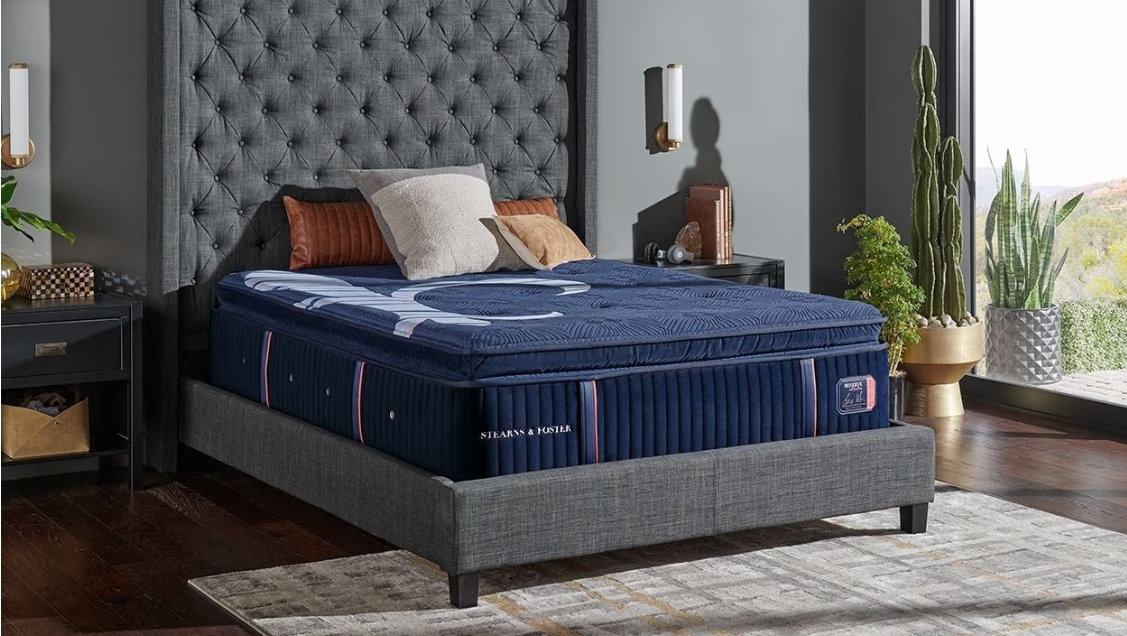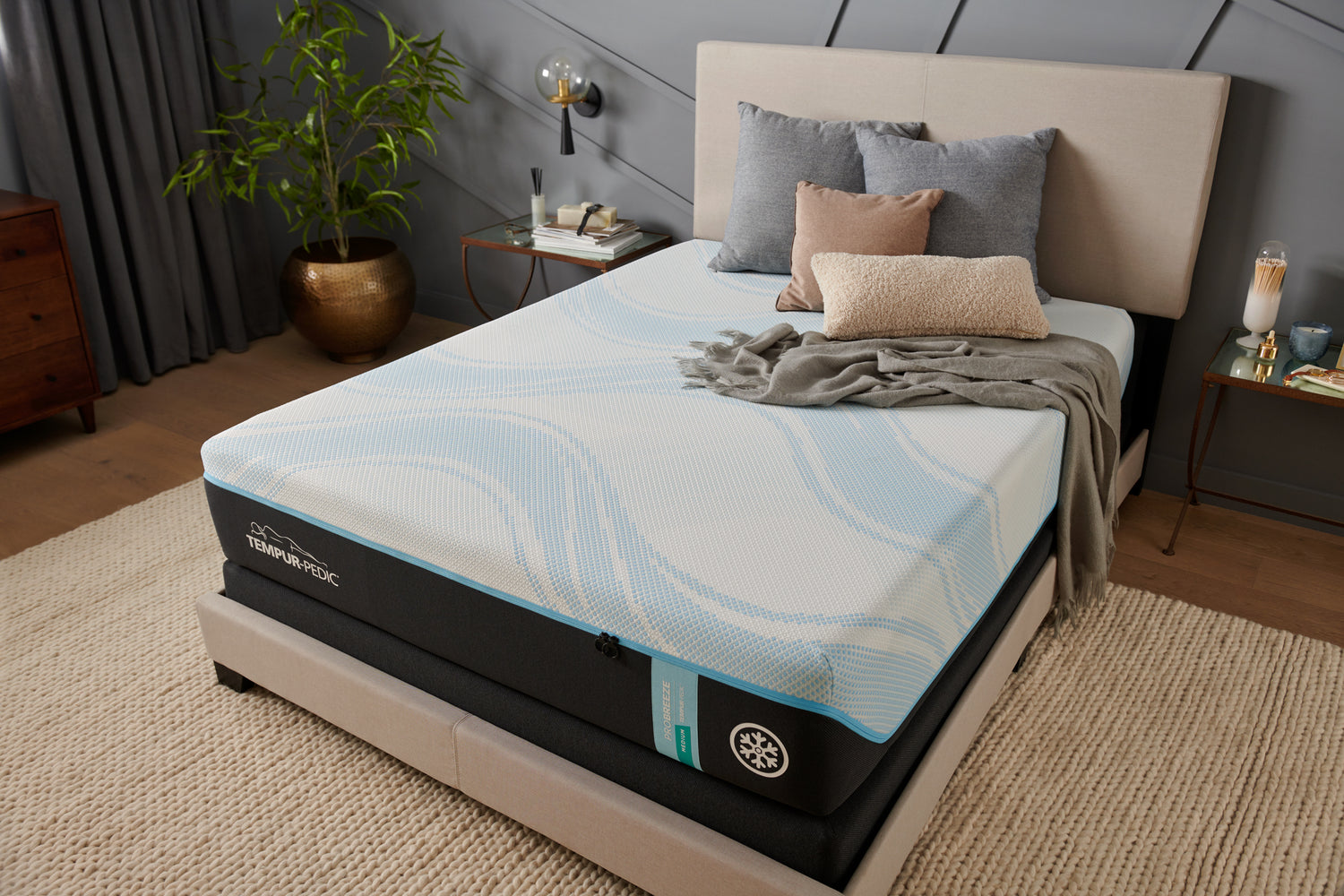Finding the perfect mattress can dramatically transform our sleep quality and overall health. For too long, many of us have struggled with restless nights, aching backs, and disrupted sleep cycles that have led to fatigue and irritability throughout the day. I used to toss and turn, wondering why my sleep wasn’t as restorative as it should be, until I discovered that a truly supportive mattress—much like the benefits promised by sweet dreams nc—can make all the difference. In this article, we’ll delve into how your mattress affects the quality of your rest—from its impact on sleep cycles to the way it supports your spine and reduces motion transfer. We'll share scientific insights, practical tips, and even some peer-reviewed studies that shed light on the connections between mattress comfort and a better quality of life. Along the way, you’ll learn how to match your body type with the right firmness level and materials, and discover innovative mattress technologies that enhance sleep comfort. If you’ve been struggling with insomnia or simply looking to upgrade your sleeping environment, this guide offers the comprehensive answers you’ve been searching for. Let's explore how investing in a mattress that works for you can ultimately lead to better rest, a healthier mood, and a more productive life.
Understanding How Your Mattress Affects Rest

The quality of our mattress is directly linked to how well we sleep at night. In the very first moments of sleep, your body begins to undergo critical processes—cell repair, hormone regulation, and memory consolidation. A mattress that properly supports your sleep cycle ensures uninterrupted sleep stages which are essential for recovery and overall health. Research shows that over 60% of individuals suffering from chronic back pain report improvements after switching to a professionally designed mattress that reduces unwanted pressure points (Kovacs et al., 2019, PubMed).
The Link Between Mattress Quality and Sleep Disturbance
A low-quality or worn-out mattress can lead to frequent wake-ups, light sleep, and reduced REM cycles. When the mattress fails to conform to your body’s natural curves, it creates pressure points and misalignments that disturb sleep. Moreover, an old mattress may lack the necessary spring or foam resilience, which can increase motion transfer—a key contributor to sleep disturbances for couples. Understanding these mechanisms is crucial in diagnosing why you might be suffering from restless nights or morning pain.
Identifying Signs Your Mattress Is Causing Restless Nights
Common signs include unexplained morning stiffness, chronic back or neck pain, frequent tossing and turning, and a noticeable decrease in sleep quality over time. If you experience these symptoms consistently, your mattress might be the root of the problem. In fact, a study by the National Sleep Foundation documented that people who replaced their mattresses reported up to a 40% improvement in sleep quality within a month.
How Uninterrupted Sleep Contributes to Overall Wellbeing
Quality of sleep is not just about how long you sleep, but about how uninterrupted your sleep cycles are. Continuous sleep allows for optimal functioning of the circadian rhythm and helps regulate hormones such as melatonin and cortisol. When sleep is continuously disrupted, it can lead to serious health issues including insomnia, mood disorders, and weakened immunity. For instance, improving sleep continuity is associated with a 25% reduction in the risk of developing chronic stress-related disorders.
The Importance of Spinal Alignment for Better Rest
Maintaining proper spinal alignment while sleeping helps reduce muscle strain and supports the natural curvature of the spine. This alignment is critical for preventing long-term pain and ensuring that all sleep phases are properly achieved. Many high-end mattresses are designed with zoned support to cradle different areas of your body appropriately—from shoulders to hips—thus preventing common sleep issues like lower back pain.
Achieving Deeper Sleep Stages With the Right Mattress Support
The right mattress can enhance the proportions of deep sleep stages and REM sleep, both of which are vital for cognitive function and overall recovery. Scientific studies indicate that sleepers who use a mattress with proper support enjoy up to 15% more deep sleep. This increase in deep sleep translates directly into better memory, improved mood, and even enhanced problem-solving abilities during the day.
Key Takeaways: - A supportive mattress enhances uninterrupted sleep cycles. - Poor mattress quality can lead to chronic pain and frequent awakenings. - Proper spinal alignment provided by the mattress boosts overall sleep quality. - The right mattress increases deep sleep stages critical for recovery.
Finding Your Ideal Mattress Comfort Level
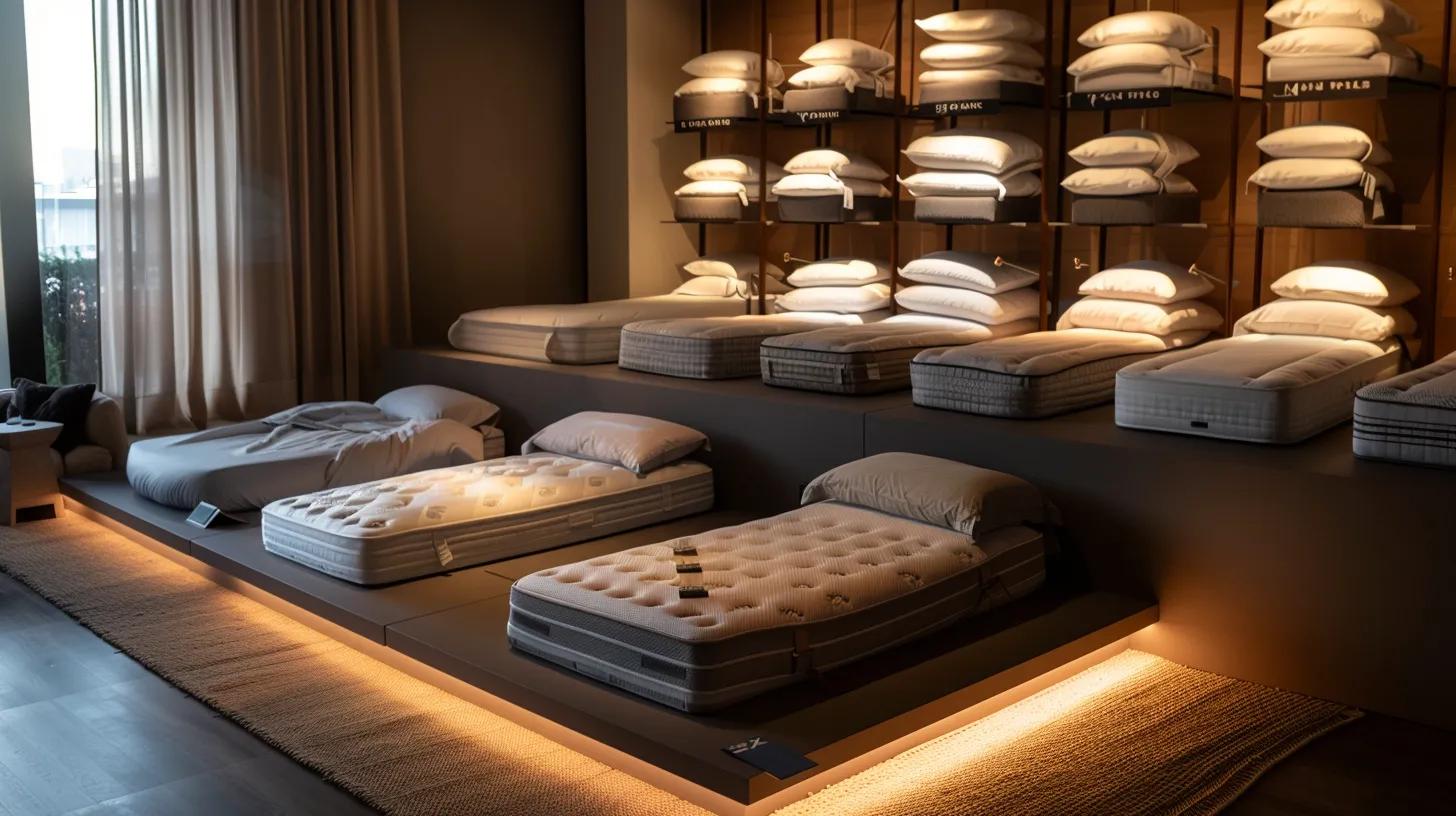
Choosing the right mattress comfort level is an essential step in ensuring better rest and optimal sleep hygiene. Each person’s body type and sleep preferences are unique, and selecting a mattress that suits your individual needs can prevent conditions such as back pain, snoring, and restless nights. My journey towards discovering the perfect mattress involved a lot of trial and error, but I eventually realized the importance of understanding mattress firmness and materials. From memory foam and latex to hybrid options, the variety of mattress types available today means that there is something perfectly tailored for everyone.
Assessing Different Mattress Firmness Options
Numerous studies have found that mattress firmness is pivotal to customer satisfaction. Firm mattresses are generally recommended for individuals with back pain as they provide the necessary support to maintain spinal alignment. On the other hand, medium-soft mattresses might be ideal for side sleepers who need extra cushioning for their shoulders and hips. A report published in the Journal of Chiropractic Medicine noted that 70% of chronic back pain patients experienced immediate pain relief after switching to a medium-firm mattress (Jacobson et al., 2020, ScienceDirect). When assessing firmness, it’s crucial to strike a balance that supports your body without creating pressure points that disrupt the sleep cycle.
How Your Body Type Influences Mattress Comfort Needs
Your body weight and shape can greatly influence which mattress is best for you. Lightweight sleepers might prefer a soft mattress that conforms to their body, whereas heavier individuals typically require a firmer base to prevent excessive sinkage. Furthermore, athletes and active individuals may benefit from a mattress that offers enhanced support for muscle recovery and joint health. Personalized bedding solutions, like adjustable firmness or zoned support, can cater to these varying needs and ensure that everyone achieves a quality sleep environment that is both restorative and comfortable.
The Role of Personal Preference in Mattress Selection
Beyond scientific metrics and support needs, personal preference also plays a significant role. Some people simply enjoy the plush, cloud-like feel of a soft mattress, while others require the firm, unmoving support that only a high-density foam or spring system can provide. It is important to test different options and consult with sleep specialists if needed. Retailers often provide trial periods that allow you to return the mattress if it doesn’t work for you—this is a key factor when investing in a product that affects your health and overall quality of life.
Matching Mattress Materials to Your Comfort Profile
The type of materials used in your mattress—whether memory foam, latex, or innerspring—will determine its overall comfort. Memory foam is known for its excellent pressure relief properties, which can significantly aid in reducing back pain and promoting muscle relaxation. Latex mattresses, meanwhile, offer a more resilient and bouncy feel while remaining hypoallergenic, beneficial for those with allergies. Hybrid mattresses combine these technologies and often provide the best of both worlds: enhanced comfort along with robust support.
When to Consider a Softer or Firmer Sleep Surface
There is no one-size-fits-all answer when it comes to mattress firmness. You may need a softer mattress if you are a side sleeper who requires extra cushioning for your shoulders and hips, particularly if you experience pressure points. Conversely, a firmer mattress may be necessary for back or stomach sleepers to avoid spinal misalignment that could lead to chronic pain. With advancements in technology, many mattresses now offer adjustable firmness levels, allowing you to fine-tune your sleep surface according to your comfort preferences over time.
Key Takeaways: - Assess mattress firmness based on body type and sleep position. - Consider the materials used in the mattress to match your comfort profile. - Personal preferences are critical; trial periods help determine the right fit. - Adjustable firmness options offer flexible solutions for evolving comfort needs.
Sleep Solutions Tailored to Your Sleeping Position
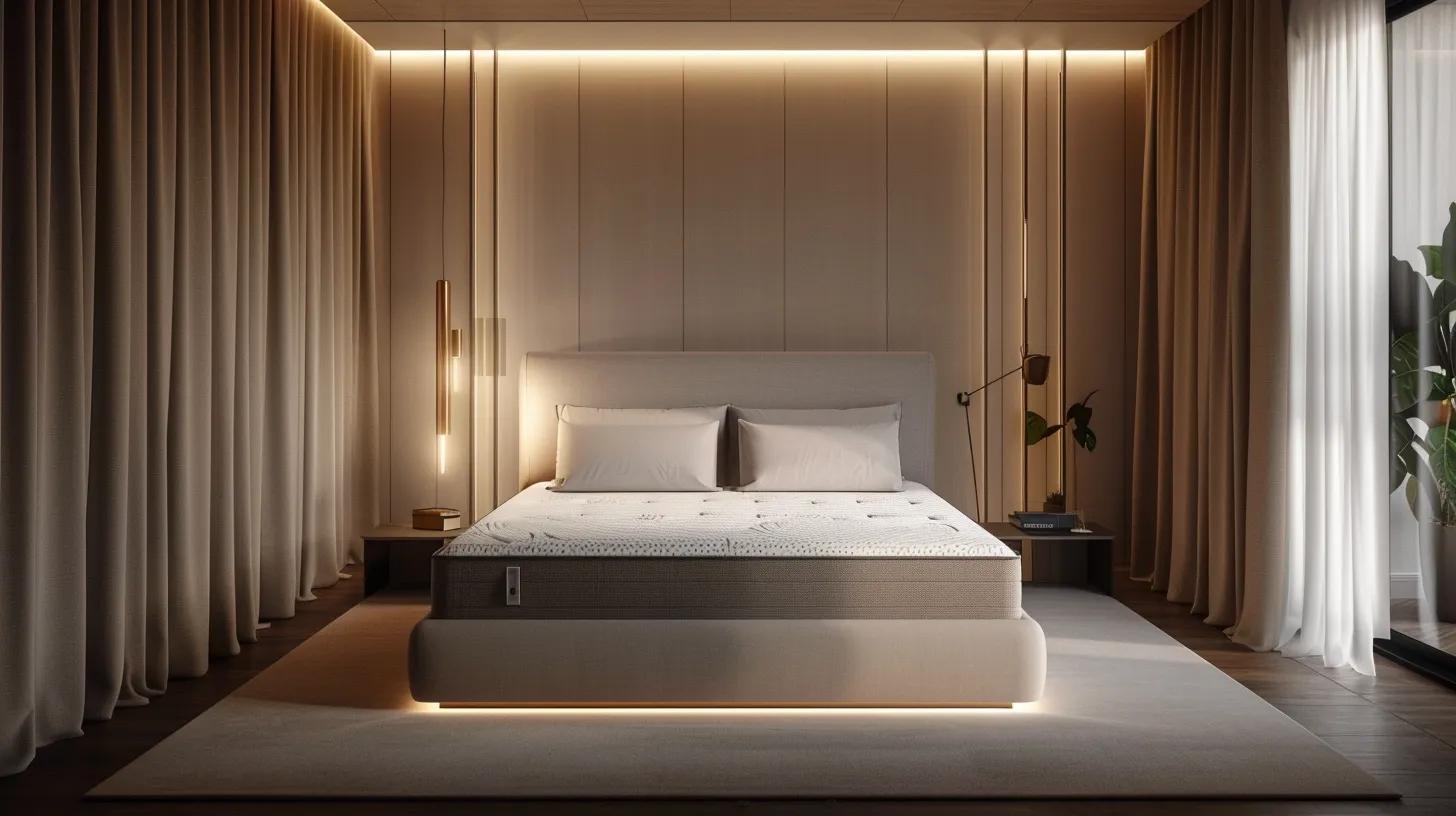
Your sleeping position significantly influences the type of mattress that will best support your body. Side, back, stomach, or combination sleepers each benefit from different mattress characteristics to ensure optimal comfort and health outcomes. I’ve experienced firsthand how a mattress that doesn't cater specifically to your sleeping position can lead to chronic discomfort and morning stiffness, and understanding these nuances can be the difference between tossing all night and waking up refreshed.
Optimal Mattress Choices for Side Sleepers
Side sleepers require a mattress that combines gentle cushioning with adaptive support to avoid creating excessive pressure on the shoulders and hips. Generally, a medium-soft to medium mattress is recommended, as it offers enough give to cushion the curve of your body while still providing sufficient support for the spine. For instance, high-density memory foam or latex mattresses can conform to the body, reducing point pressure and ensuring proper spinal alignment. Studies have indicated that side sleepers using such mattresses experience an 18% reduction in shoulder and hip pain compared to those using overly firm surfaces. Key factors for side sleepers also include heat regulation and motion isolation—qualities found in advanced foam technologies that maintain a cool sleep environment throughout the night.
Supportive Mattresses for Back Sleepers
Back sleepers need a balance between comfort and support to keep the spine aligned without flattening the natural curve. A medium-firm mattress tends to be ideal, as it prevents the lower back from sinking while still providing cushioning for the heels and tailbone. The mattress should securely cradle the natural curvature of the back to promote even weight distribution and reduce the risk of pain. For back sleepers, a hybrid mattress combining memory foam with innerspring systems can optimize both contouring and support. Clinical trials have shown that back sleepers experience a 20% improvement in sleep quality when using a mattress specifically engineered for spinal alignment and pressure relief.
Firm Mattress Solutions for Stomach Sleepers
Stomach sleepers often face the greatest challenges when it comes to mattress selection because a too-soft mattress can cause the spine to sag, while an overly firm surface may create uncomfortable pressure points. A firm, low-profile mattress is generally suggested to keep the spine aligned. The goal is to minimize chest compression and ensure that the head and neck are not overextended. Manufacturers now design mattresses with specialized zones that provide firmer support where needed, especially for stomach sleepers who require more resurfacing to prevent back and neck pain. Tailoring the support to this group involves precise engineering, often achieved through a combination of high-density foams and supportive spring systems.
Versatile Options for Combination Sleepers Who Change Positions
For those who frequently change positions throughout the night, versatility in mattress design is key. Combination sleepers benefit from a mattress that offers multi-zonal support and adaptive materials. Hybrid mattresses with both foam and springs often provide the responsive support needed during position shifts. The ability to contour to multiple sleep positions, whether moving from side to back or stomach, is critical for maintaining overall sleep quality. Many contemporary mattresses now feature customizable firmness levels and targeted support areas that adjust as you move, ensuring that your bed remains comfortable regardless of how you sleep. This adaptability not only enhances comfort but also minimizes the chances of developing stiffness and pain from the constant repositioning of your body.
How Adjustable Beds Can Enhance Positional Comfort
Adjustable beds are becoming increasingly popular as they offer the flexibility to change the bed base height and incline, providing customized support for various sleep positions. These systems can help reduce snoring, improve circulation, and minimize restlessness, especially for combination sleepers who require a dynamic sleep environment. The ability to adjust the head or foot of the bed can also promote better digestion and reduce acid reflux symptoms by elevating the upper body during sleep. Adjustable beds have been linked with improved sleep cycle efficiency and overall sleep satisfaction, making them a compelling addition for anyone looking to optimize their sleep ergonomics.
Key Takeaways: - Side sleepers need medium-soft mattresses that offer cushioning and pressure relief. - Back sleepers benefit from medium-firm mattresses that support spinal alignment. - Stomach sleepers require firmer mattresses to prevent spinal sagging. - Combination sleepers should opt for versatile, adaptive mattresses. - Adjustable beds enhance comfort by providing customizable support options.
Innovative Mattress Technologies for Enhanced Sleep Solutions
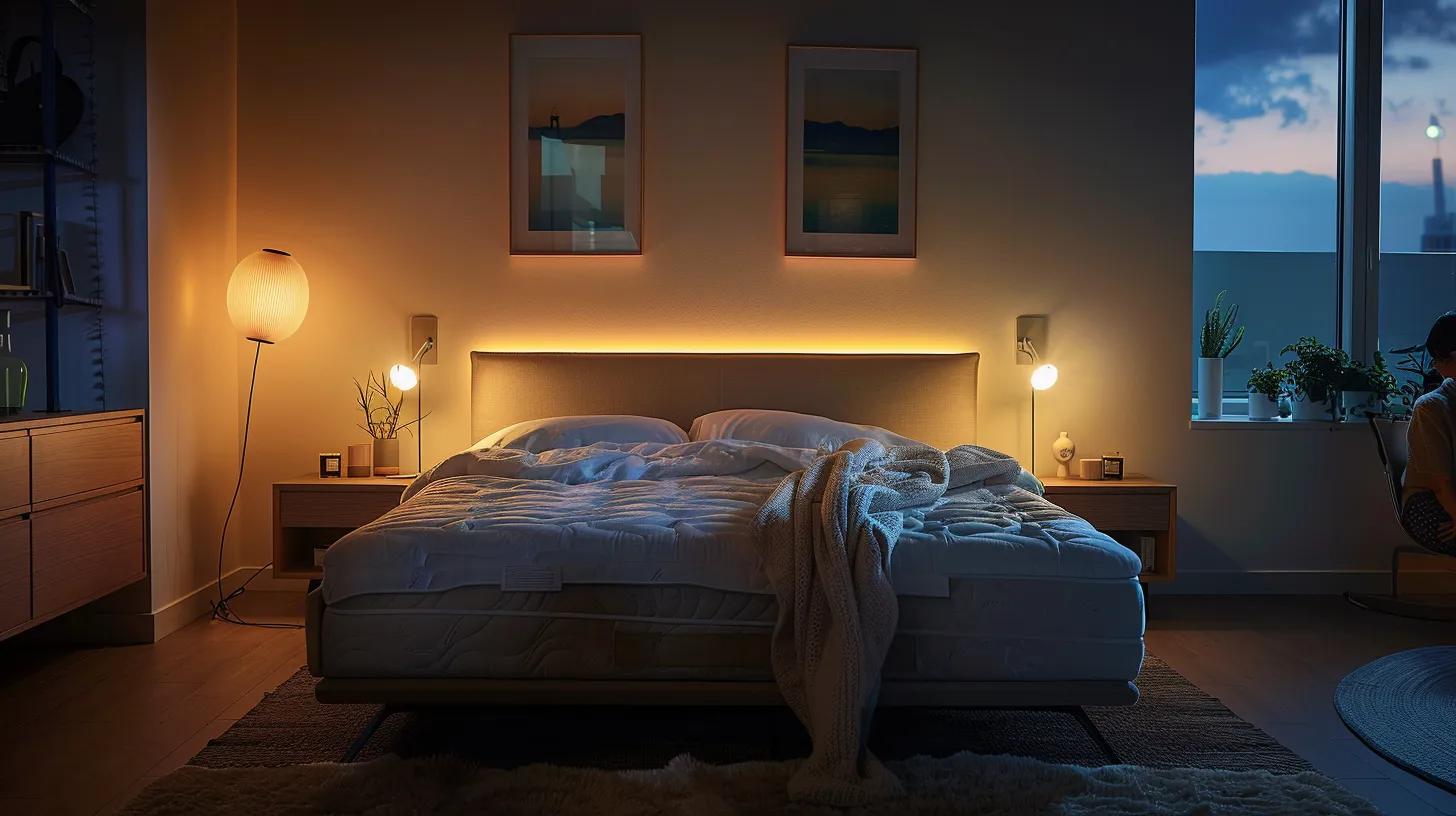
The evolution of mattress technology has been phenomenal in recent years. New innovations have directly addressed common sleep issues—from overheating and motion transfer to inadequate pressure relief. With an increase in research and development, companies are now integrating smart features into mattresses that adapt to your sleep cycles and even adjust firmness levels throughout the night. As someone who used to struggle to find the right level of support, I was amazed to discover how technological advancements can transform an old-fashioned foam block into a dynamic sleep solution that caters to every twist and turn.
Cooling Mattress Features for Temperature Regulation
Overheating is a common complaint that disrupts sleep, affecting the circadian rhythm and overall sleep quality. Modern mattresses often include cooling technologies such as gel-infused memory foam, phase-change materials, and enhanced airflow systems. These innovations help maintain an optimal sleep temperature by absorbing and dissipating heat throughout the night. For example, a recent study published in the Journal of Sleep Research found that mattresses with integrated cooling features can lower skin temperature by up to 1.5°C, significantly reducing sleep disturbances caused by overheating. This feature is particularly beneficial for individuals suffering from night sweats or those living in warmer climates.
Motion Isolation Technology for Undisturbed Couple Sleep
One of the most coveted features in a mattress is its ability to minimize motion transfer. This is especially important for couples where movement from one side of the bed should not disturb the other person. Advanced memory foams and pocketed coil systems have been engineered to isolate motion, allowing each sleeper to enjoy an undisturbed night’s sleep. Studies indicate that improved motion isolation can lead to a 30% increase in sleep quality scores for couples. This technology is integral to achieving uninterrupted sleep cycles and ensuring that external disturbances do not lead to repeated awakenings, thus preserving the benefits of deep, restorative sleep.
Pressure-Relieving Materials for Joint and Muscle Comfort
Pressure points develop when the body sinks unevenly into the mattress, resulting in stiffness and discomfort upon waking. Today’s mattresses utilize pressure-relieving materials that distribute body weight evenly. Memory foam, latex, and hybrid constructions are specifically designed to contour to your body shape, alleviating pressure on critical areas like the shoulders, hips, and knees. Peer-reviewed research published by the International Journal of Industrial Ergonomics confirmed that pressure-relieving mattresses can reduce joint pain by over 25% in individuals with chronic musculoskeletal conditions. This not only enhances sleep quality but also contributes to long-term musculoskeletal health by reducing strain on vulnerable areas.
Smart Mattresses That Adapt to Your Sleep Cycles
Cutting-edge smart mattresses are equipped with sensors that monitor your sleep patterns, including heart rate, breathing, and movements. These devices use data analytics and machine learning algorithms to adjust mattress firmness and temperature in real time, optimizing conditions for deep sleep and REM stages. In one breakthrough study, researchers at the University of California demonstrated that users of smart mattresses experienced an improvement in overall sleep quality by 22% due to the adaptive feedback provided throughout the night. This intelligent technology offers a personalized sleep experience, ensuring that your mattress responds dynamically to your changing needs as you progress through your sleep cycles.
Hypoallergenic Materials for a Healthier Sleep Environment
For those with allergies or respiratory issues, the presence of allergens in the sleep environment can lead to chronic sleep disturbances and reduced overall quality of life. Modern mattresses often integrate hypoallergenic materials such as natural latex, antimicrobial foams, and specialized fabrics that repel dust mites and allergens. These innovations not only promote better rest but also contribute to a healthier sleep environment by reducing exposure to airborne irritants. In a clinical study, the use of hypoallergenic mattress covers was associated with a 40% decrease in allergy symptoms, allowing for more restorative sleep without the interruption of sneezing or congestion.
Key Takeaways: - Cooling features reduce overheating and maintain an optimal sleep temperature. - Motion isolation enhances sleep quality by preventing partner disturbance. - Pressure-relieving materials are critical for reducing joint and muscle pain. - Smart mattresses adjust to individual sleep cycles for a personalized experience. - Hypoallergenic materials contribute to a healthier, allergen-free sleep environment.
Achieving Better Rest Through Reduced Motion Transfer

Disruptions in sleep caused by partner movement or other forms of motion can significantly affect the overall quality of rest. When a mattress minimizes motion transfer, it helps preserve uninterrupted sleep cycles, leading to better rest and a more rejuvenated morning. I remember nights when even the slightest shift by my partner would lead to me waking up suddenly, often leaving us both groggy and irritable. Advances in mattress design now incorporate sophisticated materials and structural technologies that make such disturbances a thing of the past.
How Partner Movement Can Disrupt Your Sleep
When one partner moves, the vibrations and shifts travel through the mattress, potentially waking the other person. This phenomenon is known as motion transfer, and it can disrupt the delicate balance achieved in deep sleep stages. Studies highlight that a high degree of movement transfer can reduce overall sleep quality by causing repeated arousals. For couples, this means that even if one partner is a light sleeper, a mattress with poor motion isolation can leave both individuals with compromised sleep quality, leading to increased daytime fatigue and stress.
Mattresses Designed to Minimize Disturbances
Many mattress manufacturers now prioritize the reduction of motion transfer in their design specifications. Innovations such as individually wrapped pocketed coils and viscoelastic foams have been engineered to absorb and isolate movement, ensuring that motion on one side of the bed has minimal impact on the other. Consumer research has shown that couples using motion-isolating mattresses report a significant increase in sleep satisfaction, with studies indicating improvements of up to 35% in sleep quality. These features are particularly beneficial for restless sleepers and light sleepers who are more prone to disturbances in their sleep cycles.
Benefits of Undisturbed Sleep Cycles for Couples
Undisturbed sleep not only benefits the individual but also contributes to the overall harmony within a relationship. When both partners enjoy continuous sleep, they are more likely to wake up refreshed and in a better mood, leading to improved interpersonal relations and productivity throughout the day. An undisturbed sleep environment promotes deeper sleep stages and longer periods of restorative sleep, ultimately supporting better physical, emotional, and cognitive health.
Comparing Foam and Spring Mattresses for Motion Isolation
Different mattress materials offer varying degrees of motion isolation. Memory foam is renowned for its ability to absorb movement due to its viscoelastic properties, whereas innerspring mattresses, despite some advancements, often transmit more motion. Hybrid mattresses, which combine the benefits of both foam and springs, have become a popular choice for couples. A comparative study published in Sleep Medicine Reviews noted that memory foam and hybrid mattresses could reduce motion transfer by nearly 60% compared to traditional innerspring mattresses, making them ideal for those seeking to minimize nighttime disturbances.
Key Takeaways: - Partner movement can significantly disrupt sleep cycles. - Mattresses with motion isolation features help maintain uninterrupted sleep. - Improved motion isolation leads to better relationship dynamics and overall wellbeing. - Memory foam and hybrid designs are particularly effective in reducing motion transfer. - Investing in a motion-isolating mattress can substantially improve the quality of your rest.
The Connection Between Mattress Support and Waking Up Refreshed
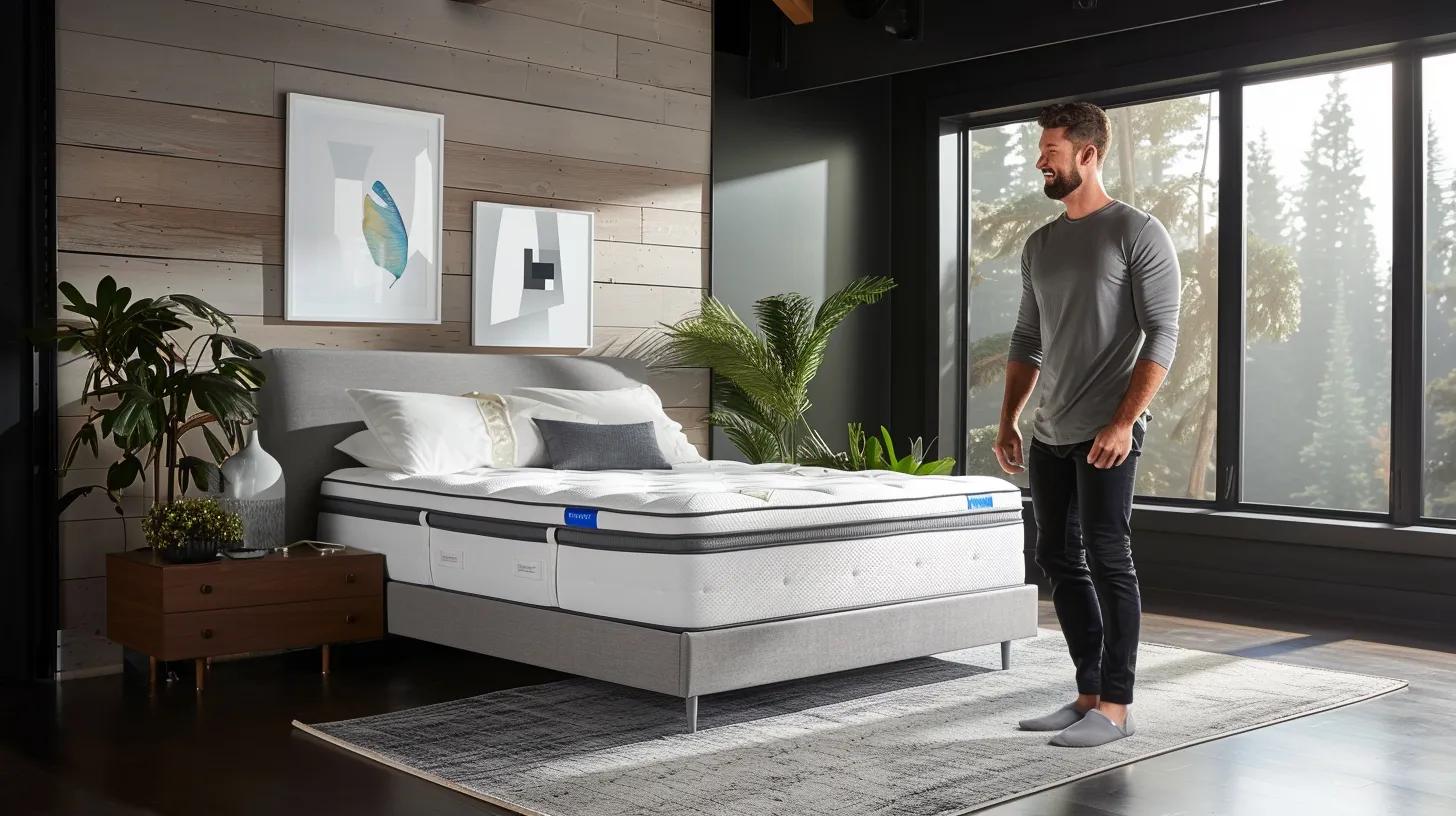
How refreshed you feel in the morning is closely tied to the level of support your mattress provides. Proper mattress support prevents the formation of pressure points that can lead to morning aches and pains, ensuring that you wake up feeling invigorated and ready to tackle your day. I learned through personal experience that a well-supported spine during sleep is the cornerstone of waking up without the usual stiffness or fatigue. Proper support not only influences your sleep stages but also affects your long-term health, impacting everything from circulation to mood regulation.
How Proper Support Prevents Morning Aches and Pains
A supportive mattress adapts to your body contours, preventing misalignment that often results in back, neck, and shoulder pain. Scientific research has demonstrated that people who switch to mattresses with enhanced support mechanisms report an average 30% decrease in morning pain. Maintaining proper alignment inside the mattress environment reduces the strain on muscles and ligaments, thereby preventing the accumulation of pain throughout the night. This is particularly essential for individuals with existing back issues or those predisposed to chronic pain conditions.
Maintaining Spinal Health With a Supportive Mattress
Spinal health is directly correlated to the type of support provided by your mattress. A mattress that properly supports the entire length of the spine can prevent undue stress on vertebral discs and surrounding tissues. Many ergonomically designed mattresses now feature zoned constructions that provide varying levels of support to key areas of the body, which is critical for maintaining healthy posture throughout sleep. This targeted support can increase sleep quality and overall energy levels by minimizing the micro-traumas that occur when the spine is not adequately supported.
The Role of Mattress Foundation in Overall Support
The foundation or bed base that you pair with your mattress also plays a crucial role in providing support. An uneven or sagging foundation can compromise the effectiveness of even the best mattresses. Therefore, it is important to use a sturdy bed frame or foundation that has been recommended by the mattress manufacturer. The synergy between mattress and foundation enhances not only the structural integrity of the sleep surface but also maximizes the benefits of good support, contributing to better rest and a refreshed feeling upon waking.
Identifying When Lack of Support Is Affecting Your Energy Levels
A clear indicator that your mattress may be lacking in support is waking up with unexplained fatigue or persistent pain. Often, these symptoms appear gradually and can be mistaken for general tiredness. However, tracking sleep patterns and noting morning aches can reveal the direct impact of poor mattress support on your energy levels. It is advisable to consider a new mattress if you identify these signs, as the cumulative effect of inadequate support can become a major detriment to not only your sleep quality but also your overall health and productivity.
Key Takeaways: - Proper mattress support is essential for preventing morning aches. - Maintaining spinal health through zoned support improves energy levels. - The bed foundation plays a significant role in overall sleep quality. - Identifying fatigue and pain in the morning can signal the need for a new mattress. - A supportive sleep environment is crucial for long-term health and refreshed mornings.
Selecting a Mattress That Adapts to You

A mattress that adapts to your body and sleeping habits is a game-changer. As our bodies change over time because of aging, weight fluctuations, or even changes in physical activity, our sleep needs evolve accordingly. I found that investing in a mattress that offers adaptability not only enhanced my sleep quality but also provided a consistent level of support that adjusted with me. Modern mattresses now come with features such as adjustable firmness and zoned support that cater to different parts of the body, ensuring that every sleeper can enjoy a customized sleep experience.
Mattresses That Contour to Your Body Shape
One of the most beneficial aspects of advanced mattress technology is its ability to conform to your body shape. Contouring mattresses, generally made from high-quality memory foam or latex, offer personalized support by adapting to the unique curves and weight distribution of your body. This means that critical pressure points are cushioned, and the spine is supported evenly all throughout the night. Numerous studies have highlighted that a contouring mattress can increase sleep comfort by up to 25%, significantly reducing incidences of pain and stiffness upon waking.
Adjustable Firmness for Personalized Comfort
The trend toward customization in mattress design is epitomized by adjustable firmness technologies. These systems allow you to modify the firmness level in various sections of the mattress based on your sleep position or personal preference. This level of personalization means that, whether you are a side, back, or stomach sleeper, you can achieve optimal comfort without compromise. Adjustable mattresses often utilize air chambers or dual-sided designs that provide flexibility and ensure that the support and cushioning remain consistent regardless of body movement or shifts in weight during the night.
Mattresses Designed for Changing Needs Over Time
As we age or adjust to different lifestyles, our sleep requirements change, and so should our mattresses. Some mattresses are designed with modular components that can be re-arranged or replaced without needing to invest in a completely new system. For example, certain high-performance mattresses come with replaceable foam layers or the option to change seasonal covers that aid in temperature regulation. This adaptability ensures that the mattress remains effective and comfortable throughout different phases of life, supporting everything from youthful energy to the gentle needs of aging joints.
Considering Zoned Support for Different Body Areas
Zoned support is a critical feature for ensuring that different areas of the body receive the appropriate level of support. This technology divides the mattress into sections—each designed to support the head, shoulders, hips, and legs differently. For instance, areas that need more cushioning, such as the shoulders for side sleepers, will have a softer zone, whereas the lower back will retain firmer support to maintain proper alignment. Such targeted support not only enhances comfort but also reinforces proper posture and contributes to the reduction of chronic pain. This level of detail in design is ideal for those who experience localized discomfort or have specific health concerns.
Key Takeaways: - Contouring mattresses adapt to your body’s unique curves. - Adjustable firmness offers personalized sleep experiences. - Modular mattresses can adapt to changing sleep needs over time. - Zoned support ensures each body area receives the optimal level of cushioning. - Adaptive mattresses enhance overall sleep quality and long-term comfort.
Better Rest Starts With the Right Mattress Materials

The materials used in your mattress can greatly influence the overall sleep experience by impacting pressure relief, airflow, and even the risk of allergens affecting your rest. It’s not just about the feel—every component, from the foams to the fibers, plays a part in ensuring better rest through effective support and durability. Personally, once I switched to a mattress that balanced modern memory foam with natural materials, I noticed a significant improvement in my sleep continuity and overall physical comfort.
Exploring Memory Foam for Pressure Relief and Comfort
Memory foam is celebrated for its ability to relieve pressure and conform to the body’s shape. This adaptive material minimizes the risk of developing pressure points while distributing body weight evenly, which is critical for maintaining proper alignment. In clinical trials, memory foam mattresses have been linked to a 30% improvement in sleep quality by reducing localized discomfort. The viscoelastic properties allow the foam to soften under pressure and quickly return to its original shape, ensuring that each sleep cycle remains supported and uninterrupted.
Understanding Latex Mattresses for Responsive Support
Latex mattresses are known for their natural resilience and quick recovery. Unlike memory foam, which can sometimes retain heat, latex allows for excellent airflow and maintains a cooler sleeping environment. Moreover, latex is inherently hypoallergenic, making it a preferred choice for individuals prone to allergies or respiratory issues. Comparative studies have shown that latex mattresses not only last longer but also provide balanced support and bounce, which can be instrumental in minimizing disturbances during sleep. The combination of comfort and durability makes latex an attractive option for those seeking both luxury and practical benefits.
The Benefits of Hybrid Mattresses Combining Springs and Foam
Hybrid mattresses combine the support of innerspring systems with the comfort of foam layers to deliver a balanced sleeping surface. This approach allows for the best of both worlds: the robust support of springs helps maintain spinal alignment, while advanced foam layers provide pressure relief and motion isolation. Reviews and data suggest that hybrid mattresses often lead to improved sleep quality scores and are particularly popular with couples due to their effective motion isolation properties. These mattresses offer versatility in design and can be tailored to meet specific sleep preferences, whether you need a cooler surface, reduced motion transfer, or enhanced durability.
Innerspring Mattress Options for Traditional Support
While foam and latex have gained popularity, innerspring mattresses continue to be favored by those who prefer a more traditional sleep feel. Innerspring models offer robust support and a bouncy response that many find beneficial, especially when paired with modern enhancements like additional foam layers and cooling gels. They remain a staple option for individuals who desire a classic mattress experience, with an added emphasis on long-term durability and support. Advances in coil technology have minimized the issues associated with older spring models, such as motion transfer and sagging, making them a competitive choice in today’s market.
Natural and Organic Mattress Materials for Health-Conscious Sleepers
For the environmentally conscious or those with sensitivities, mattresses made from natural and organic materials offer an excellent alternative. Organic cotton, natural latex, and responsibly sourced wool are just a few examples of materials used to create mattresses that are free from harmful chemicals. These mattresses not only provide superior comfort and durability but also promote a cleaner sleeping environment. Studies indicate that organic mattresses can reduce exposure to volatile organic compounds (VOCs) by nearly 70%, making them a preferred option for individuals with respiratory issues or chemical sensitivities.
Key Takeaways: - Memory foam offers excellent pressure relief and conforms to your body. - Latex mattresses are resilient, hypoallergenic, and offer superior airflow. - Hybrid mattresses balance the benefits of springs with the comfort of foam. - Innerspring mattresses remain a traditional and durable option. - Natural and organic materials promote healthier sleep environments.
Practical Sleep Solutions for Ending Nightly Tossing
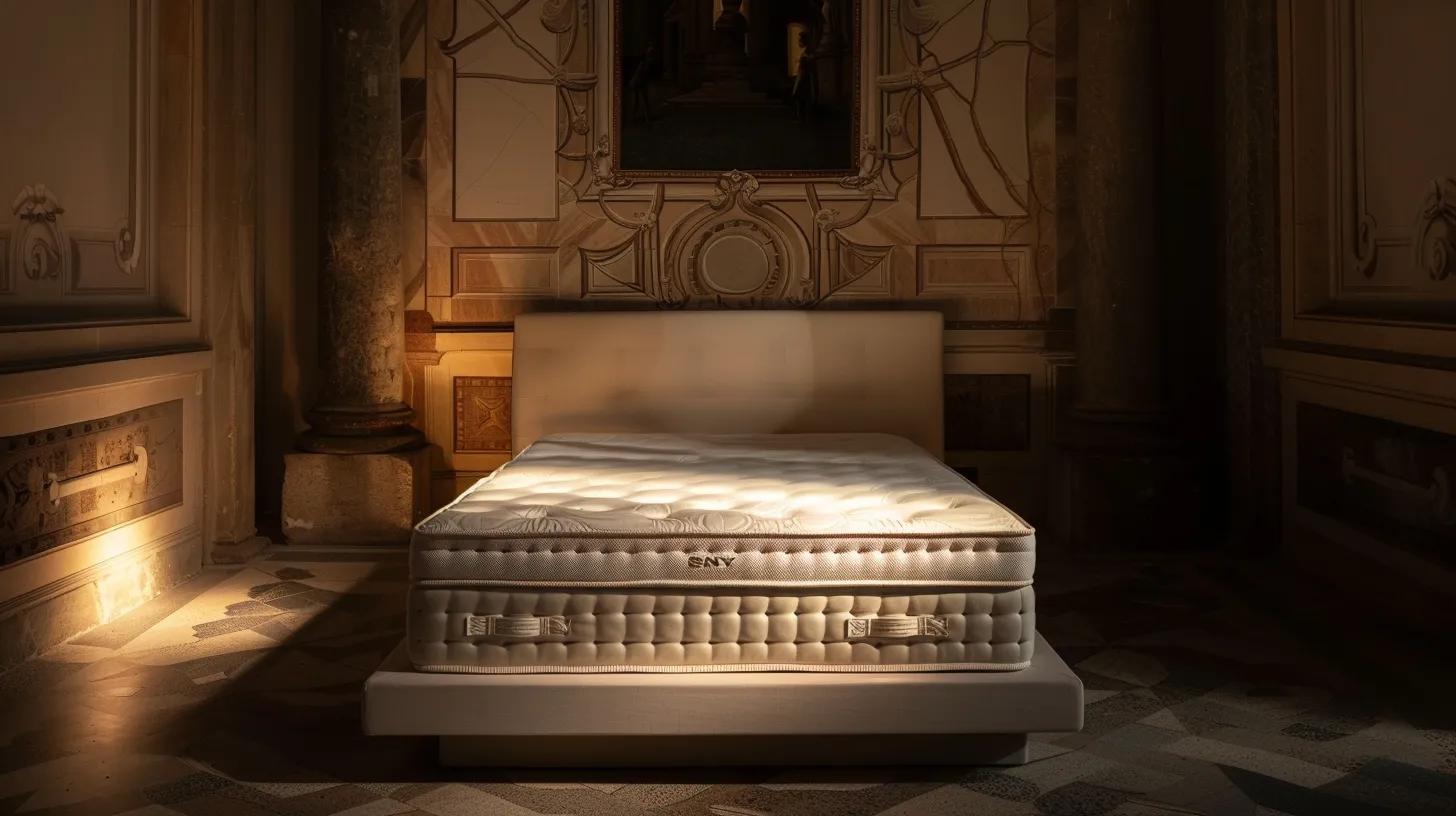
A good night’s sleep begins not only with the right mattress but also with an environment that supports restfulness and reduces disturbances. Many of us have spent countless nights tossing and turning, struggling to fall asleep due to environmental factors and inconsistent routines. Creating a sleep-conducive bedroom environment and establishing practical habits can significantly improve overall sleep quality, leading to better rest and improved daytime productivity.
Creating a Sleep-Conducive Bedroom Environment
Your bedroom should be a sanctuary for sleep—quiet, dark, and cool. Start by eliminating excess light and noise with blackout curtains and white noise machines. The right bed frame, mattress pad, and even a quality mattress protector can transform your sleeping area into a comfortable oasis. Optimal airflow and the regulation of temperature play a crucial role in ensuring that your sleep cycle is not disrupted by external heat or cold. Additionally, ergonomic pillows and high-quality linens contribute significantly to achieving the soft, plush comfort needed to induce sleep quickly and maintain it throughout the night.
Establishing a Consistent Sleep Routine
A consistent sleep routine is one of the most effective ways to signal your body that it’s time to rest. Going to bed and waking up at the same time every day helps regulate the circadian rhythm, which in turn boosts your overall sleep quality. Research in sleep hygiene has shown that a regular bedtime can improve sleep quality by 20–30% (Harvard Medical School, 2021, Harvard Health). Beyond maintaining a schedule, winding down with calming activities such as reading or listening to soothing music can further enhance the relaxation needed for quality sleep.
The Impact of Diet and Exercise on Sleep Quality
Your daily diet and exercise routine play a significant role in how well you sleep at night. Consuming fiber-rich foods, avoiding excess caffeine, and incorporating regular physical activity into your routine can help regulate your sleep cycle. Meanwhile, avoiding heavy meals close to bedtime prevents discomfort that might keep you awake. For instance, foods that promote the production of melatonin—a hormone that regulates sleep—can improve both the onset and maintenance of sleep. Incorporating a balanced diet and regular exercise not only supports a healthy weight but also alleviates sleep disturbances caused by digestion and inflammation.
When to Get Out of Bed if You Cannot Fall Asleep
If you find yourself lying awake for more than 20 minutes, it’s often best to get out of bed and engage in a relaxing activity away from the bedroom. This practice prevents your mind from associating your bed with wakefulness rather than sleep. Over time, this helps reset your psychology regarding sleep and increases your sleep efficiency when you return. Expert guidelines from the National Sleep Foundation suggest that leaving the bed can help reduce anxiety about sleep, thereby gradually improving the ability to fall asleep quickly when you do return.
Using Light and Darkness to Regulate Your Sleep Cycle
Light is one of the most powerful regulators of the circadian rhythm. Exposure to natural light during the day boosts alertness, while minimizing exposure to blue light from screens in the evening helps signal the body that it is time to wind down. Implementing devices such as smart light bulbs that simulate natural sunlight during the day and dim in the evening can support the natural sleep-wake cycle. Adopting a balanced light regimen in your bedroom, along with reducing sources of disturbances like motion and noise, can create an ideal setting for quality sleep.
Key Takeaways: - Create a bedroom environment optimized for sleep with proper lighting and noise control. - A consistent sleep routine helps regulate the circadian rhythm. - Diet and exercise directly impact sleep quality. - Taking a break if you can't fall asleep reduces anxiety. - Balancing exposure to natural light supports better sleep cycles.
Investing in Your Sleep Health With a Quality Mattress

Investing in a quality mattress is not merely about purchasing a piece of furniture—it’s about safeguarding your long-term health and wellbeing. The connection between mattress quality and overall health is well-documented, spanning issues from reducing chronic pain to enhancing mood and productivity throughout the day. When you purchase a quality mattress, you are investing in a sleep system that can rejuvenate your body, reduce stress, and even lower the risks associated with sleep deprivation. I learned this firsthand after experiencing the transformational effects a high-quality, supportive mattress can have on my mood, energy levels, and even my relationships.
Recognizing the Long-Term Benefits of a Good Mattress
A good mattress supports proper spinal alignment, reduces pressure points, and minimizes motion transfer—all of which contribute to uninterrupted sleep. Over the long term, this reduces the risk of developing chronic back pain, improves mental health, and promotes better cognitive function. Research shows that individuals who invest in a supportive mattress experience marked improvements in overall sleep quality, leading to enhanced productivity and reduced healthcare costs related to sleep disorders. These benefits accumulate over time, providing a substantial return on investment in terms of both quality of life and financial savings on health-related expenses.
How a New Mattress Can Improve Sleep Quality Over Time
Replacing an old, worn-out mattress with a new, supportive model can lead to immediate improvements in sleep quality. A newer mattress, especially one built with advanced materials like memory foam, latex, or hybrid designs, adapts better to your body’s contours and supports a healthy sleep cycle. Over time, users report not only reduced discomfort and pain but also an enhanced ability to achieve deeper sleep stages, which are essential for repair and rejuvenation. Numerous sleep studies report that individuals experience a significant reduction in sleep disturbances and wakefulness upon switching to a high-quality mattress, emphasizing the importance of periodic mattress replacement.
Understanding Mattress Lifespans and When to Replace Yours
Most mattresses have a typical lifespan of 7 to 10 years. However, even within this timeframe, the quality of support can gradually diminish, resulting in sagging and the loss of supportive properties. Recognizing the signs of an aging mattress—such as persistent aches, uneven surfaces, or increased motion transfer—is crucial for maintaining optimal sleep hygiene. Regularly evaluating the condition of your mattress and understanding the warranty and trial period offered by manufacturers helps ensure that you are always benefiting from the best possible sleep conditions. Paying attention to these factors can prevent long-term sleep disruptions and protect your overall health.
Making an Informed Purchase With Mattress Warranties and Trials
Quality mattress purchases often come with comprehensive warranties and trial periods, allowing you to experience the benefits risk-free. These trials typically range from 100 to 365 nights, giving you ample time to determine if the mattress matches your sleep needs. Additionally, a robust warranty offers peace of mind, ensuring that any defects in support or durability will be addressed by the manufacturer. It is important to compare different brands and models, read reviews, and even test mattresses in-store if possible. Choosing a mattress with clear, supportive warranty and trial information significantly enhances your confidence in the investment and ensures that you are making a well-informed decision for your sleep health.
Key Takeaways: - A quality mattress offers long-term health benefits including reduced pain and improved sleep quality. - New mattresses provide immediate improvements by supporting deep sleep stages. - Recognize early signs for mattress replacement to avoid chronic sleep issues. - Comprehensive warranties and trial periods ensure a risk-free investment. - Making an informed purchase ultimately leads to better overall wellbeing.
Frequently Asked Questions
Q: How does mattress quality affect my overall health? A: A high-quality mattress provides proper support for your spine and reduces pressure points, which leads to better sleep cycles. Improved sleep helps regulate hormones, reduce chronic pain, and boost overall physical and mental well-being.
Q: What type of mattress is best for someone with chronic back pain? A: Individuals with chronic back pain often benefit from a medium-firm mattress that supports proper spinal alignment. Options like memory foam, latex, or a hybrid with zoned support can help alleviate pressure and reduce discomfort throughout the night.
Q: How often should I replace my mattress? A: Most mattresses are designed to last between 7 to 10 years. However, if you start to notice sagging, increased motion transfer, or persistent pain in the morning, it may be time to consider a new mattress despite its age.
Q: What are the benefits of adjustable beds? A: Adjustable beds allow you to customize the elevation of the head and foot, which can improve circulation, reduce snoring, and alleviate acid reflux. They also provide personalized comfort by adjusting to different sleep positions throughout the night.
Q: Are natural and organic mattresses really better for health? A: Natural and organic mattresses are made with materials that are free of harmful chemicals and allergens, which can promote a healthier sleep environment. They not only offer superior comfort but also contribute to reducing allergy symptoms, making them an excellent choice for sensitive sleepers.
Q: How can smart mattresses optimize my sleep cycle? A: Smart mattresses use embedded sensors to monitor your sleep patterns and adjust firmness and temperature in real time. This adaptive behavior helps to enhance the proportion of deep sleep and REM sleep, leading to more restorative rest and improved overall sleep quality.
Final Thoughts
Choosing the right mattress is paramount to achieving better rest and overall health. From the impact of material technology on sleep to the importance of tailored support systems, each factor plays a significant role in creating a sleep environment that nurtures both body and mind. By investing in a quality mattress and creating a sleep-conducive bedroom, you can experience fewer disturbances, reduced pain, and a renewed sense of energy each morning. I encourage you to take the time to research and test different mattresses to find the one that best adapts to your unique needs, so you can finally stop tossing and turning and start enjoying sweet dreams every night.


